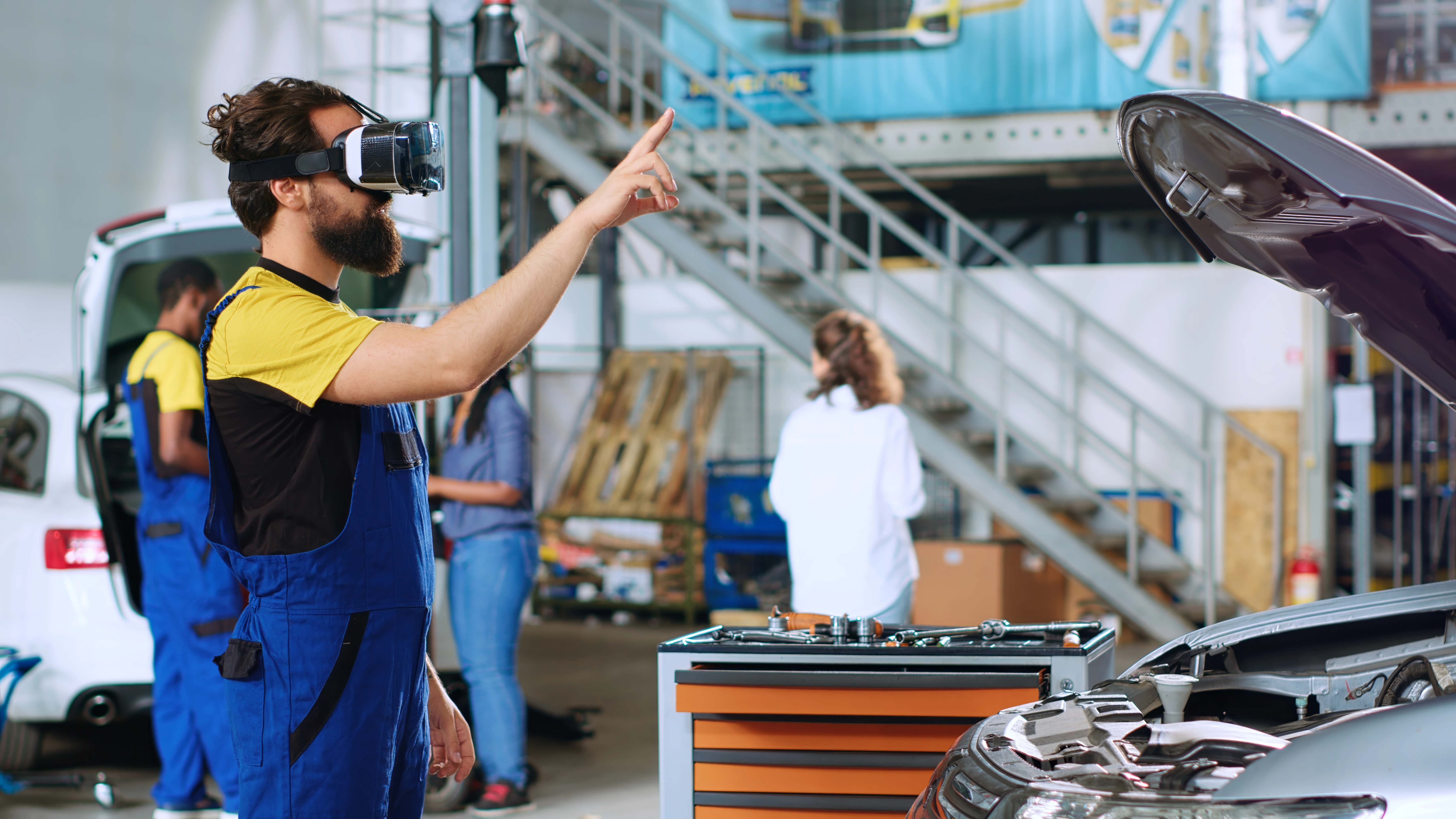In the manufacturing industry, giving workers a safer, more productive training program on the use of machinery has been a challenging task over many years. Traditional methods, like manuals and live sessions, often fail to simulate real-world scenarios effectively. So, to bridge this gap, AR/VR technology is used because it offers immersive and interactive learning.
From Manuals to Interactive Training Modules
Traditional training manuals often struggle to explain the complexities of machinery. Workers are left to interpret diagrams and text, which can lead to errors or slow learning. So imagine replacing complex, 2D manuals with the help of augmented reality in manufacturing.
Such are the advantages of augmented reality in this sector that the technology can overlay digital instructions directly on the machinery, allowing workers to see step-by-step guidance as they operate. Meanwhile, VR enables them to interact with simulated equipment, offering risk-free practice.
By converting theoretical instructions into hands-on experiences, AR/VR ensures workers gain deeper understanding without affecting production.
Bringing Precision to Specialized Industries
Works like jewelry-making or high-accuracy manufacturing require exceptional precision. For such tasks, AR/VR offers detailed and immersive training environments.
Here’s how it helps:
Jewelry-making: Virtual modules allow trainees to practice engraving, polishing, and assembly without risking valuable materials.
Precision manufacturing: Workers can simulate delicate processes, refining their skills in a controlled, error-free space.
These technologies reduce material waste, save time, and help trainees achieve higher proficiency.
Safety Training Without Risks
When it comes to manufacturing, the primary priority happens to be the safety of workers who are often handling dangerous equipment and hazardous materials. The long-followed traditional methods expose trainees to real-world dangers quite early in their learning phase.
This is exactly where an essential role is played by VR in manufacturing because this technology helps eliminate this highly possible risk. It can simulate tasks like operating heavy machinery or responding to emergencies, all within a virtual environment. This approach builds their confidence and expertise while preventing accidents.
Cost-Effective and Scalable Solutions
AR/VR training modules aren’t just effective but also economical. Companies can reuse these virtual setups across locations, ensuring uniform training experiences. Additionally, the scalability of AR/VR makes it a practical investment for global operations.
Building Skills for Modern Manufacturing
By replicating real-world environments, AR/VR technology provides manufacturing workers with a comprehensive, interactive, and safe training experience. It helps the workers in several ways from operating complex machinery to mastering precision tasks, thereby successfully addressing the evolving needs of the modern manufacturing industry.
FAQs
1. How does AR help in the training process of the manufacturing industry?
A trainee can see highlighted parts on a machine, with AR showing the sequence of actions they need to take, like tightening bolts correctly in order or aligning components properly..
2. Can AR/VR handle complex tasks like jewelry-making?
Yes, AR/VR replicates intricate processes, enabling workers to refine techniques such as engraving and assembling with top-notch precision.
3. How does AR/VR improve safety in training?
Workers train in virtual environments, practicing hazardous tasks like operating heavy machinery without real-world risks.
4. What cost benefits do manufacturers gain with AR/VR?
AR/VR eliminates prototype costs, reduces downtime, and provides reusable training modules, making it a cost-effective solution.
Kavita has been adept at execution across start-ups since 2004. At KiKsAR Technologies, focusing on creating real life like shopping experiences for apparel and wearable accessories using AI, AR and 3D modeling


